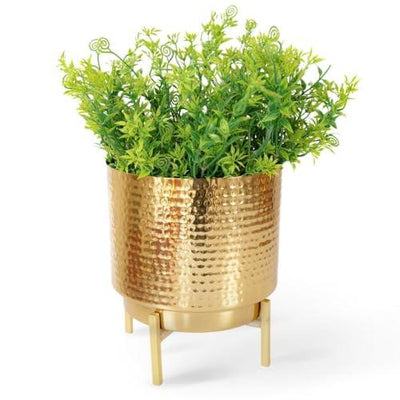The Art of Caring for Your Fiddle Leaf Fig: A Guide to Keeping Your Plant Happy and Healthy
Fiddle Leaf Figs are a popular and stylish addition to any home or office space. With their distinctive violin-shaped leaves, these plants have become a favorite among plant enthusiasts and interior designers alike. In this article, we'll take a closer look at the key aspects of Fiddle Leaf Fig care, so you can keep your plant looking its best for years to come.
Light Requirements for Fiddle Leaf Fig:
Fiddle Leaf Figs prefer bright, indirect light, and they need to be exposed to natural light for at least six hours a day. However, direct sunlight can scorch their leaves, so it's important to keep your plant away from windowsills or other areas where it will be exposed to direct sun. If your plant is not getting enough light, it may start to look leggy and its leaves may become pale. If this is the case, move it to a brighter location, or consider supplementing its light with a grow light.
Watering Your Fiddle Leaf Fig:
Fiddle Leaf Figs don't like to be waterlogged, so it's important to let the soil dry out between waterings. On the other hand, if the soil is allowed to become too dry, the plant may start to wilt. To strike a balance, it's best to water your Fiddle Leaf Fig when the top inch of soil feels dry to the touch. In general, it's a good idea to water your plant once a week, although you may need to adjust this schedule depending on the conditions in your home or office.
Temperature and Humidity for Fiddle Leaf Fig:
Fiddle Leaf Figs prefer temperatures between 60 and 85 degrees Fahrenheit, and they don't like to be exposed to extreme heat or cold. They also prefer a relatively humid environment, so you may need to use a humidifier or mist your plant regularly to keep the air moist. If the air in your home is very dry, your Fiddle Leaf Fig may start to drop leaves or become prone to spider mites and other pests.
Pruning and Repotting Your Fiddle Leaf Fig:
Fiddle Leaf Figs are relatively slow-growing plants, but they can become quite tall if left unpruned. To keep your plant healthy and manageable, it's a good idea to prune it regularly. Simply remove any yellow or damaged leaves, and cut back any shoots that are growing too tall. You should also repot your Fiddle Leaf Fig every two to three years, or when the roots have outgrown the current pot.
Frequently Asked Questions About Fiddle Leaf Fig:
Q: Why is my Fiddle Leaf Fig dropping leaves? A: Fiddle Leaf Figs are known for shedding leaves, especially if they are not getting the right conditions. Common causes of leaf drop include changes in temperature or humidity, over- or under-watering, and exposure to direct sun. If your plant is dropping leaves, try to identify the root cause and make adjustments accordingly.
Q: Why is my Fiddle Leaf Fig not growing? A: Fiddle Leaf Figs are relatively slow-growing plants, but if your plant is not growing at all, it may be due to a lack of light, water, or nutrients. You may also want
to check the temperature and humidity levels in your home or office, as Fiddle Leaf Figs require a specific range for optimal growth. If you have ruled out these factors, it may be that your plant has reached its maximum size, or that it is suffering from root rot or pest damage.
Q: How do I get my Fiddle Leaf Fig to grow taller? A: To encourage your Fiddle Leaf Fig to grow taller, you need to provide it with the right conditions, including bright, indirect light, adequate water and nutrients, and a warm, humid environment. You can also help your plant grow taller by pruning it regularly to encourage new growth and by repotting it into a larger pot when necessary.

Conclusion:
With the right care and attention, your Fiddle Leaf Fig can be a beautiful and long-lasting addition to your home or office. By following these tips for optimal light, water, temperature, and humidity, you can help your plant thrive and enjoy its distinctive violin-shaped leaves for years to come. Whether you are a seasoned plant enthusiast or a beginner, the Fiddle Leaf Fig is sure to bring a touch of elegance and style to your space.
It's important to remember that every Fiddle Leaf Fig is unique and may require slightly different care, so it's a good idea to pay attention to your plant's individual needs and make adjustments as necessary. With a little patience and persistence, you'll soon be able to enjoy the many benefits of this popular and stylish houseplant.
Finally, it's also worth mentioning that Fiddle Leaf Figs are not only beautiful, but they are also great for the air quality in your home. These plants are natural air purifiers, removing toxins and pollutants from the air, so not only will your home look great, but it will also be a healthier place to live. So, if you're looking for a way to add some greenery to your life, consider a Fiddle Leaf Fig – it's sure to bring a touch of nature and beauty to any space.

















Leave a comment